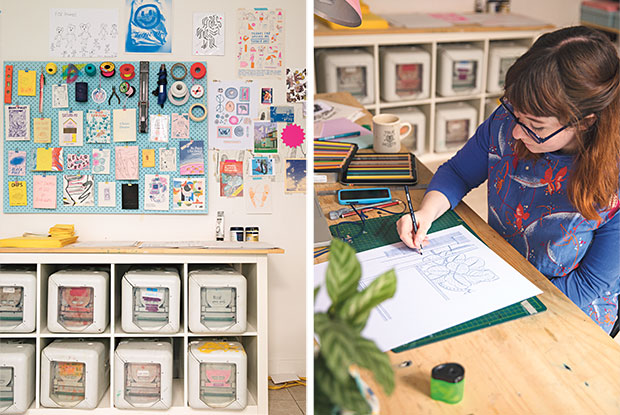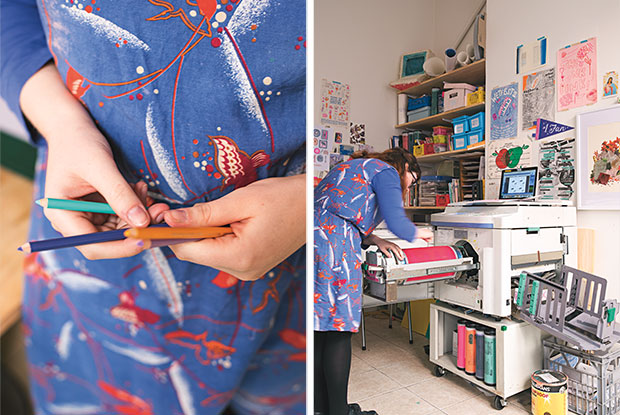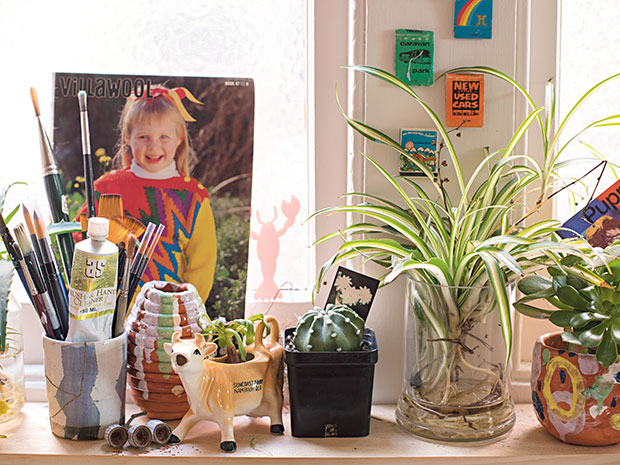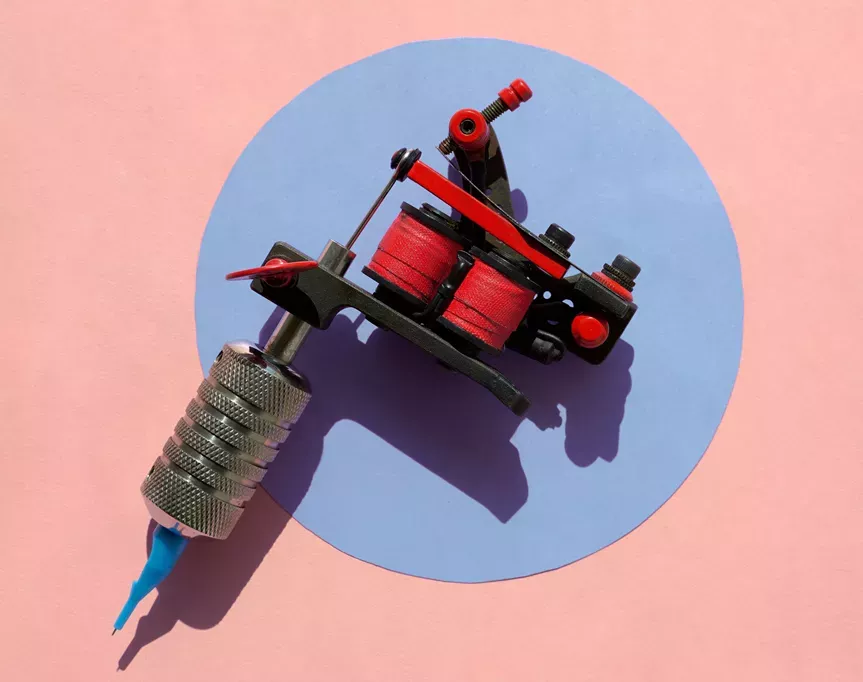look what we made – ashley ronning
"I was studying international relations at ANU, and soon into it, realised, 'I hate this,' and decided, 'You know what? I’m going to move to Melbourne and do the creative job thing, give it a shot.'"
Her studio smells of vetiver and sounds like the future. That’s the way illustrator and zine-maker Ashley Ronning gets things done.
Did you always want to be an illustrator? I didn’t actually know that
it was a job that existed until I was halfway through my design course. It was always,
“You can do that in your spare time, you’re really good at it.” Before that I was studying international relations at ANU, and soon into it, realised, “I hate this,” and decided, “You know what? I’m going to move to Melbourne and do the creative job thing, give it a shot.”
What kind of illustration work do you do now? At the moment I’m doing a lot of gig posters, some editorial things, some band t-shirts. I’m a huge fan of merch. I love going to see music, and listening to music – all of that.
I play bass in a band called Eat-Man.
Zine-making is one of your major creative practices. Were you a zine reader first? I hadn’t read that many before I began. It’s funny how the zine style comes naturally to people. I took a workshop with [Sydney zine-maker] Vanessa Berry. She’s amazing – I wonder if I’d be the same person without it. 
Tell us about the risograph printing technique you use. It’s kind
of like an automatic screen-printing machine,
or a screen-printer meets a photocopier. It was designed for office environments, and it’s only meant to print one colour at a time, but artists have co-opted it into this really economical, high-quantity way of making really interesting-looking artworks. I love that I can make an entire zine just in this one room without leaving. I’m really grateful that I’ve got all the tools for it right here, and I love having control of every single aspect. Before I had the Riso I felt kind of lost with handing the printing over to other people.
Which other media and techniques do you use? I really like using gouache, watercolour, ink and coloured pencil. And often with commercial stuff I’ve been going more digital lately, because it means changes are easier. So, if I’ve got a poster, especially for bigger touring companies. I usually ink all the lines, but I’ll make sure it’s in pieces and it’s really easy to change in Photoshop. I had a bad experience where they were like, “Why isn’t it more like the sketch?” when it was pretty far along.
How has your work developed over the past few years you've been illustrating full-time? I’ve definitely honed my style a lot, getting a bit better and really finding my voice, and finding mediums that I really love. For example, I thought maybe coloured pencil just didn’t work for me for a long time. But then I found the brand that’s right for me – Prismacolor. They’re really vivid, and also they’ve got this waxy quality that the watercolour flows over, and the pencil still stands out under the watercolour. I’ve also been focussing more and more on space and technology. And because people are seeing that out there, I get commissioned to do work like that, which I love. Any time I hear, “I’ve got a space thing, I hear you are the person,” it just makes me super happy. 
How did you get your current studio? I’m sharing with some fine art printers, Hound & Bone. They’re amazing. I’d come by their studio and hang out, and then one day I asked what they were doing with that spare room they’ve got, and they said I could move in! We’ve got the same working hours and similar weird habits, and we get along great. I love it here.
What are some of those weird habits? They can probably hear me! Working too hard and forgetting to eat, or eating a crappy lunch,
or working too late, or coming in super hungover, and not giving each other too much flak for it.
Which hours do you work? Usually 9 or
10 till 6, but I’ve been letting it go a bit. I used
to have a really strict routine, but now my partner’s day job is working as an usher, and he sometimes finishes late, so I think I’ve moved into his routine a little bit more. I’ll stay up later and get up later.
What are your work rituals? If I really need to focus I’ll put on a candle. I’ve got this great one now that’s vetiver-scented. My partner did all this research into concentration. Apparently vetiver helps, and I got my hands on a candle. I don’t know if the scent actually works, but it always gets you in that zone. It helps. 
Do you listen to music while you're working? Usually podcasts, all day long. There’s this really good one called Flash Forward. It’s considering possible future scenarios, like: what if all the bees in the world disappeared? Or: what if babies could be made in a machine instead of a human? And often what gets talked about ends up in my artworks. We’re in this weird moment where there’s all this really cool technology happening, but also some really weird, backwards political stuff going on in the world. It’s funny having all these things collide in my work – like using Photoshop to get the thing to my printer, and then sharing it on social media.
As a freelancer, how do you balance the creative side of your work with the need to support yourself? Full-time illustration is so hard. It’s really scary when it’s your income, but it also depends on your drive, and your creativity, and often your confidence in yourself. So, every now and then I get a bit sad, or just frustrated with myself, and lose a bit of the happiness in it.
How do you cope with those times? Usually I go to exhibitions, or take a day off and read some books, or I’ll just start doing some silly drawings until I feel better again. I feel less exhausted by the ‘inner self-drive’ stuff when I’m working on commercial projects, because I can draw on references that are further away from me, and it feels a bit easier than something that’s more personal.
This is an edited extract from our coffee table book Look What We Made. If you’re curious to learn about more local makers, pop by the frankie shop to pick up a copy.



_(11)_(1).png&q=80&h=682&w=863&c=1&s=1)








.jpg&q=80&w=316&c=1&s=1)













.jpg&q=80&w=316&c=1&s=1)










